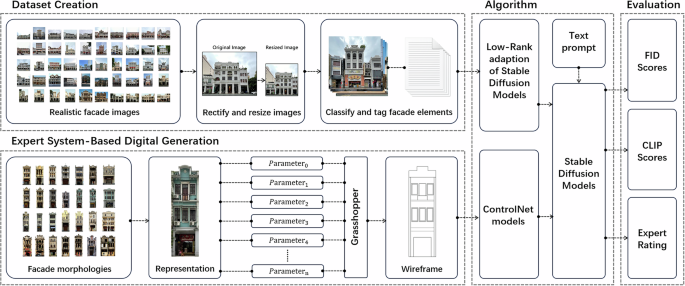The study details the training of six LoRA models designed to generate arcade facade images using a dataset and the v1-5-pruned.safetensors base model, optimized for fine-tuning on an NVIDIA GeForce RTX 3090. Key parameters like batch size, learning rate, and optimizer were optimized, and loss values monitored for performance assessment. Results indicated that models like ArcadeFacadeV2.3 excelled in accurately reflecting traditional styles and semantics, vital for urban historical district renewal. Using metrics such as the Frechet Inception Distance (FID) and CLIP scores, the models were evaluated quantitatively and qualitatively, confirming their capacity for producing high-quality, contextually relevant images. Expert assessments emphasized design authenticity, while comparisons with existing methods (e.g., Pix2pix, CycleGAN) illustrated superior performance in texture and structural detail. The framework, emphasizing both precision and creative design flexibility, showcases its potential for aiding architectural preservation and urban renewal efforts through advanced parametric approaches.
Source link
Revitalizing Urban Spaces: A Stable Diffusion Model Framework for Automated Historical Facade Preservation

Share
Read more